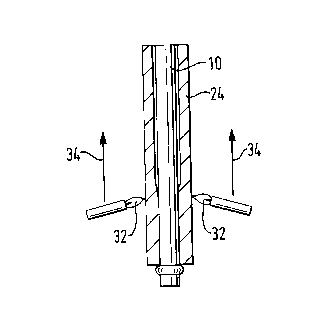Some of the information on this Web page has been provided by external sources. The Government of Canada is not responsible for the accuracy, reliability or currency of the information supplied by external sources. Users wishing to rely upon this information should consult directly with the source of the information. Content provided by external sources is not subject to official languages, privacy and accessibility requirements.
Any discrepancies in the text and image of the Claims and Abstract are due to differing posting times. Text of the Claims and Abstract are posted:
| (12) Patent: | (11) CA 2154369 |
|---|---|
| (54) English Title: | OPTICAL FIBRE PREFORMS |
| (54) French Title: | PREFORMES A FIBRES OPTIQUES |
| Status: | Term Expired - Post Grant Beyond Limit |
| (51) International Patent Classification (IPC): |
|
|---|---|
| (72) Inventors : |
|
| (73) Owners : |
|
| (71) Applicants : |
|
| (74) Agent: | SMART & BIGGAR LP |
| (74) Associate agent: | |
| (45) Issued: | 2000-04-04 |
| (22) Filed Date: | 1995-07-20 |
| (41) Open to Public Inspection: | 1996-01-22 |
| Examination requested: | 1997-10-15 |
| Availability of licence: | N/A |
| Dedicated to the Public: | N/A |
| (25) Language of filing: | English |
| Patent Cooperation Treaty (PCT): | No |
|---|
| (30) Application Priority Data: | ||||||
|---|---|---|---|---|---|---|
|
A method of manufacturing a preform for drawing into an optical fibre comprises positioning a rod 10 within a sleeving tube 42 therefor to form an assembly in which there is an annular space 26 between the rod and tube, and collapsing the tube onto the rod to form a solid cross-section preform. The collapsing step comprises sealingly closing the annular space 26 at one end 30 of the assembly and applying suction to the annular space from the other end of the assembly. The annular space 26 at said one end 30 is sealingly closed by locating the end 28 of the tube at said one end on an annular rib 22 of said rod and fusing said tube end to said rib.
Une méthode de fabrication d'une préforme à tirer dans une fibre optique comprend le positionnement d'une tige 10 dans une gaine isolante 42 pour former un ensemble dans lequel il y a un espace annulaire 26 entre la tige et la gaine et l'affaissement de la gaine sur la tige pour former une préforme à section transversale pleine. L'étape d'affaissement comprend la fermeture étanche de l'espace annulaire 26 à une extrémité 30 de l'ensemble et l'application d'une aspiration à l'espace annulaire à partir de l'autre extrémité de l'ensemble. L'espace annulaire 26 à ladite extrémité 30 est fermé de manière étanche en plaçant l'extrémité 28 de la gaine à ladite extrémité sur une nervure annulaire 22 de ladite tige et en fusionnant ladite extrémité de gaine à ladite nervure.
Note: Claims are shown in the official language in which they were submitted.
Note: Descriptions are shown in the official language in which they were submitted.

2024-08-01:As part of the Next Generation Patents (NGP) transition, the Canadian Patents Database (CPD) now contains a more detailed Event History, which replicates the Event Log of our new back-office solution.
Please note that "Inactive:" events refers to events no longer in use in our new back-office solution.
For a clearer understanding of the status of the application/patent presented on this page, the site Disclaimer , as well as the definitions for Patent , Event History , Maintenance Fee and Payment History should be consulted.
| Description | Date |
|---|---|
| Inactive: Expired (new Act pat) | 2015-07-20 |
| Letter Sent | 2009-09-23 |
| Grant by Issuance | 2000-04-04 |
| Inactive: Cover page published | 2000-04-03 |
| Inactive: Final fee received | 1999-12-23 |
| Pre-grant | 1999-12-23 |
| Notice of Allowance is Issued | 1999-11-05 |
| Notice of Allowance is Issued | 1999-11-05 |
| Letter Sent | 1999-11-05 |
| Inactive: Approved for allowance (AFA) | 1999-10-04 |
| Inactive: RFE acknowledged - Prior art enquiry | 1998-01-20 |
| Inactive: Status info is complete as of Log entry date | 1998-01-20 |
| Inactive: Application prosecuted on TS as of Log entry date | 1998-01-20 |
| Request for Examination Requirements Determined Compliant | 1997-10-15 |
| All Requirements for Examination Determined Compliant | 1997-10-15 |
| Application Published (Open to Public Inspection) | 1996-01-22 |
There is no abandonment history.
The last payment was received on 1999-07-05
Note : If the full payment has not been received on or before the date indicated, a further fee may be required which may be one of the following
Please refer to the CIPO Patent Fees web page to see all current fee amounts.
Note: Records showing the ownership history in alphabetical order.
| Current Owners on Record |
|---|
| PRYSMIAN CABLES & SYSTEMS LIMITED |
| Past Owners on Record |
|---|
| GRAHAM FREDERICK WOOD |
| PETER CHARLES SAMPSON |
| PETER ROBERT INCE |